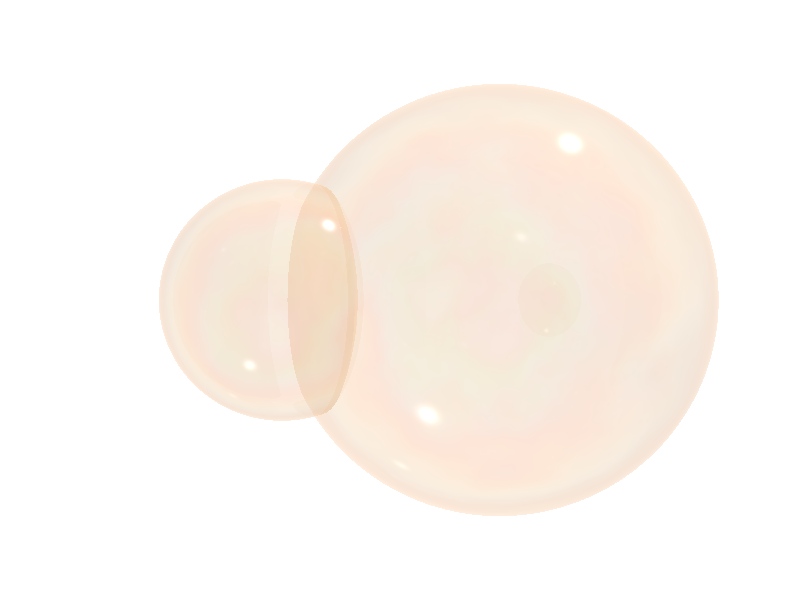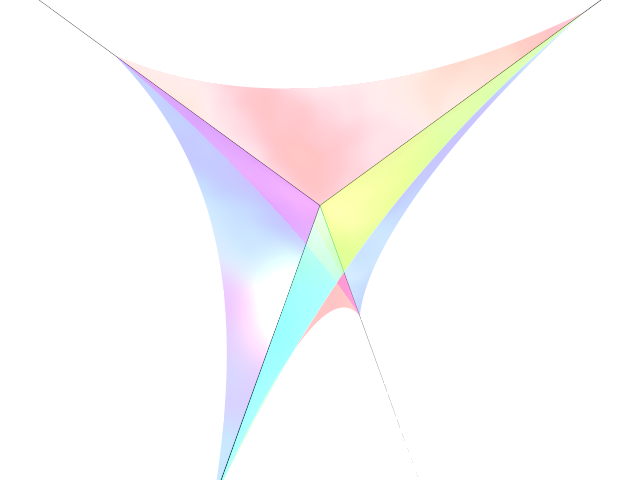Gaussian bubble clusters
Suppose I ask you to divide \(\mathbb{R}^n\) into two pieces of fixed Gaussian measure so that the surface area of the boundary is as small as possible. The Gaussian isoperimetric inequality states that the best way to do it is by cutting \(\mathbb{R}^n\) with a hyperplane:
Now what if I ask for three parts instead of two? That is: divide \(\mathbb{R}^n\) into three pieces of fixed Gaussian measure so as to minimize the surface area of the boundary. I solved this recently with Emanuel Milman; the answer is what we call a "tripod" partition (a.k.a. the "standard Y" or the "peace sign" partition):
Ok, but if there are three parts, then why is this called a Gaussian double-bubble? It's from analogy with the (more famous) Euclidean double-bubble problem, which asks for a surface-area-minimizing partition of \(\mathbb{R}^n\) into three pieces with given Lebesgue measure (one of the measures is necessarily infinite). We're definitely justified in calling this a double-bubble problem, because the answer looks like one:

In the words of all those annoying standardized tests: the Gaussian double bubble is to the Gaussian isoperimetric inequality as the Euclidean double bubble is to the Euclidean isoperimetric inequality. That's why we call it a Gaussian double bubble.
What about more bubbles? In general, multi-bubble problems seem to be hard: the solution to the Euclidean triple-bubble problem is known only in two dimensions, and the Euclidean quadruple-bubble is not understood in any setting. However, a follow-up paper by Emanuel Milman and I solves the Gaussian \(k\)-bubble problem in \(n\) dimensions (i.e. we can find the optimal split of \(\mathbb{R}^n\) into \(k+1\) parts) whenever \(n \ge k\). For example, here's an optimal Gaussian triple bubble in three dimensions:
